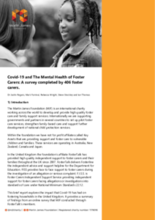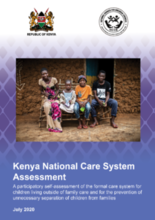Displaying 351 - 360 of 2214
In this case, we meet Maya, an adolescent girl in foster care who is trafficked for sex.
This article examines rates of disparity using secondary longitudinal clinical-administrative data provided by a child protection agency in Quebec for a subsample of Black, White, and other visible minority children over a ten-year span.
This brief report explores the impact that Covid-19 has had on fostering households in the United Kingdom.
The purpose of this study was to identify changes in knowledge, skills and efficacy of foster caregivers who received trauma coach services.
This study aimed to explore the experiences and perceptions of health among young people (YP) who have previously lived in care.
The briefing begins by providing a brief overview of the current situation for care experienced young people in Scotland, highlighting significant recent developments which provide a context for discussions about the impact of lockdown on care leavers.
This care system assessment is intended to support the Government of Kenya to assess and strengthen the national, formal care system.
In response to the continuing need for agencies providing residential care and treatment to children and youth to develop and/or to enhance their ability to examine the effectiveness and efficiency of their services, this article explores successful strategies for building and sustaining research capacity in these settings.
This article reports the findings of MIRRA, a participatory research project on the memory and identity dimensions of social care recordkeeping.
This study presents findings from a systematic review of interventions that target successful reunification.




